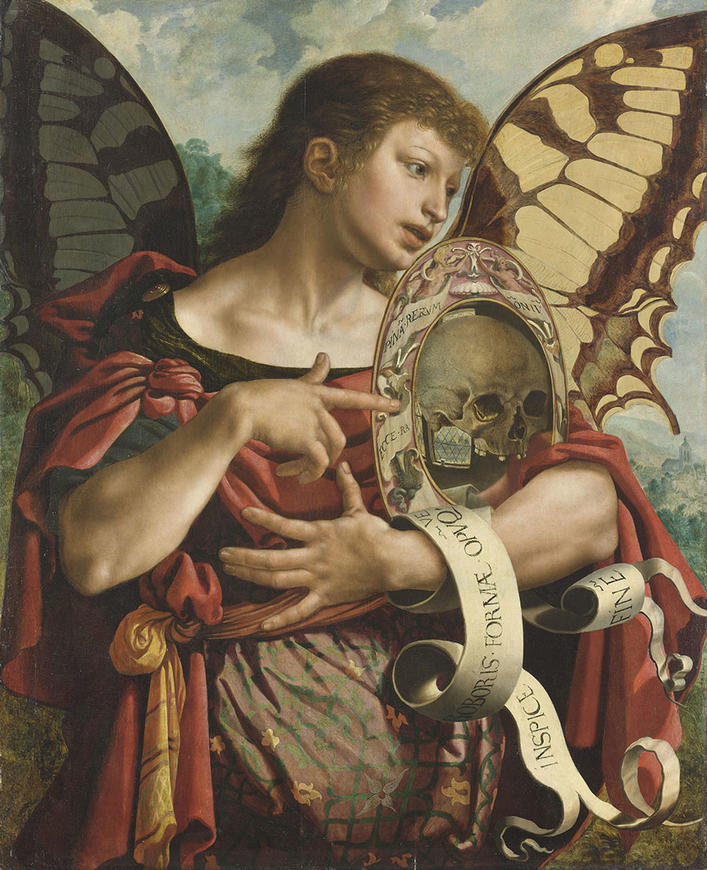Here is an image type that was very much in vogue in the XVIth century in Flanders, at a time when death fascinated people as much as it terrified them.
An angel with the wings of a butterfly is placed in a landscape. He holds a mirror in which a skull is reflected. In the West, the skull is a symbol of Vanity, it shows the fragility of human life. The Latin inscriptions written on the edge of the mirror, and on the scroll that surrounds it, clearly signify to the spectator that wealth and beauty are unimportant and that in the end, death will mow everyone down.
The reference to the butterfly compensates for the pessimistic side of this work. Since ancient times, this insect has been a symbol of immortality. In the Christian religion, it is associated with the soul, the seat of thought. The Christian can, therefore, hope that his soul will survive the physical death of his body.
If we look more closely, a strange element attracts the eye. In the reflection of the mirror, behind the skull, one can see the panes of a window, and yet the angel is outside! It is believed that there originally existed a second panel, placed next to this work, forming a diptych. On this panel, you could have seen the character to whom the angel is showing the skull and who could have been the sponsor of the work.
Inventory number: P. 2009
Detail : A clue tells us more about the sponsor: on the window ledge, a pile of gold pieces suggests that the person who commissioned this work was a merchant or a banker!

Here is an image type that was very much in vogue in the XVIth century in Flanders, at a time when death fascinated people as much as it terrified them.
An angel with the wings of a butterfly is placed in a landscape. He holds a mirror in which a skull is reflected. In the West, the skull is a symbol of Vanity, it shows the fragility of human life. The Latin inscriptions written on the edge of the mirror, and on the scroll that surrounds it, clearly signify to the spectator that wealth and beauty are unimportant and that in the end, death will mow everyone down.
The reference to the butterfly compensates for the pessimistic side of this work. Since ancient times, this insect has been a symbol of immortality. In the Christian religion, it is associated with the soul, the seat of thought. The Christian can, therefore, hope that his soul will survive the physical death of his body.
If we look more closely, a strange element attracts the eye. In the reflection of the mirror, behind the skull, one can see the panes of a window, and yet the angel is outside! It is believed that there originally existed a second panel, placed next to this work, forming a diptych. On this panel, you could have seen the character to whom the angel is showing the skull and who could have been the sponsor of the work.
Inventory number: P. 2009
Detail : A clue tells us more about the sponsor: on the window ledge, a pile of gold pieces suggests that the person who commissioned this work was a merchant or a banker!